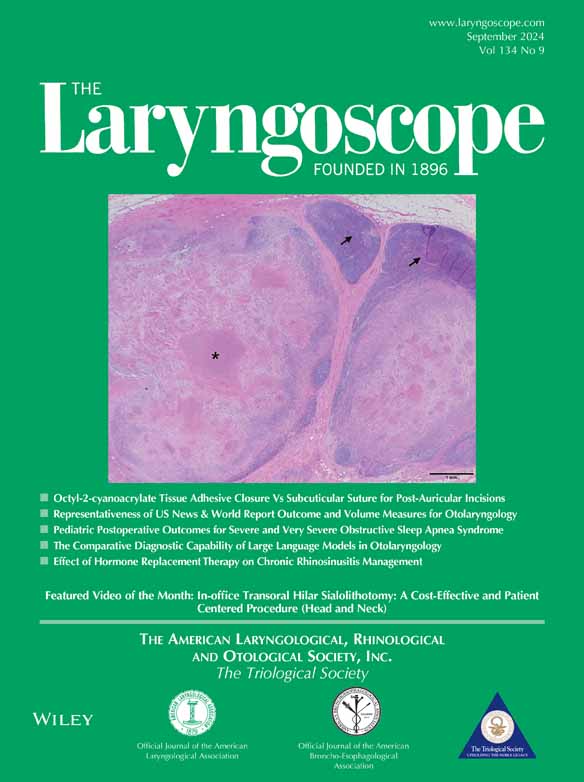Voice Disorders and Hearing Loss May Be Additive Risk Factors for Depression in a National Cohort
Anaïs Rameau and Lauren H. Tucker Shared primary authorship.
Anaïs Rameau was supported by a Paul B. Beeson Emerging Leaders Career Development Award in Aging (K76 AG079040) from the National Institute on Aging and by the Bridge2AI award (OT2 OD032720) from the NIH Common Fund. Justin S. Golub was supported by K23AG057832.
Anaïs Rameau owns equity of Perceptron Health, Inc. Anaïs Rameau is a medical advisor for Savorease, Inc, and Sound Health Systems, Inc. Justin S. Golub is on the surgical advisory board of Alcon. The other authors have no other financial relationships or conflicts of interest to disclose.
This manuscript was presented as a podium presentation at the Triological Society meeting in West Palm Beach on January 26, 2024.
Abstract
Objectives
Hearing loss (HL) (receptive communication impairment) is a known risk factor for depression. However, dysphonia (expressive communication impairment), has received little study. We study HL, self-reported voice disorder, and combined impairment as risk factors for depression in a large national cohort.
Methods
This was a cross-sectional epidemiologic study. Data were analyzed from the Korean National Health and Nutrition Examination Survey (KNHANES) cycles 2008–2012 and 2019–2020. KNHANES uniquely contains both audiometry and voice disorder data. HL (yes/no) was defined as ≥25 dB pure tone average. Voice disorder (yes/no) was defined by self-report. Depression (yes/no) was defined by physician diagnosis. Odds ratios for depression were calculated using multivariable logistic regressions with HL and voice disorder.
Results
8,524 individuals aged 19 to 80 years old had complete data. The mean age was 57.3 years (SD = 13.4) and 64% were women. All regressions were controlled for age and sex. Those with HL, versus those without, had 1.27 times the odds (95% CI = 1.07–1.52, p = 0.007) of depression. Those with self-reported voice disorder, versus those without, had 1.48 times the odds (1.22–1.78, p < 0.001) of depression. Those with HL and self-reported voice disorder, versus those with neither, had 1.79 times the odds (1.27–2.48, p < 0.001) of depression.
Conclusions
This study demonstrates independent relationships between HL and depression and self-reported voice disorder and depression. Combined HL and self-reported voice disorder had nearly 1.8 times the odds of depression. This is likely due to the grossly additive effect of difficulty with incoming and outgoing communication streams.
Level of Evidence
II Laryngoscope, 134:4060–4065, 2024




